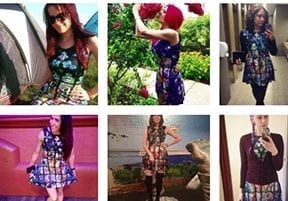Not everyone shops for the least expensive products from the lowest-priced vendor. Even so, no one wants to waste money.
When you are not the bargain-basement option, it’s important to provide shoppers with reassurance that what you’re charging is worth it. You can do that subtly or obviously. But before I get into content techniques that reassure shoppers about value, think generally about why people might pay a higher price.
Value Considerations
Consumers will typically spend more when products have one or more of the following characteristics.
Better ingredients. Organic food costs more, and people who believe it’s healthier don’t mind paying extra. BMW cars are generally perceived as more valuable than Hondas because of the German engineering.
Scarcity. This explains why a 1943 copper penny is worth thousands of dollars more than the pennies in your pocket. And it applies to any one-of-a-kind item, which is scarce by definition.
Reputation. Branded products usually go for more than generic counterparts — sometimes much more. And because certain brands enhance the prestige of their owner, they command higher prices.
Principles. Kindhearted shoppers would rather pay more for cosmetics that are not tested on animals. Home-schooling parents may prefer to buy curricula from those who share their beliefs, even if the content is the same.
Guarantee. A shop that offers strong return policies can charge more than others.
Convenience. An all-you-need kit can sell for more than the cost of its components, because it saves the buyer the time and hassle of assembling. Similarly, faster shipping is worth more to some consumers because they prefer to have what they’re buying sooner.
Extras. In my childhood, parents would have paid more for Cracker Jacks than other snacks because the box contained a toy that kids craved. Today, if you offer a tennis racquet with a free can of tennis balls, it can outsell a cheaper one that comes with nothing extra.
How to Communicate Value
Once factors influencing perceived value are identified, ecommerce merchants can communicate that value with their overall branding or with product descriptions.
The key idea is to communicate the “why” in your value proposition explicitly. Don’t take for granted that all shoppers understand a product’s quality, scarcity, or convenience. By reminding them, you underscore the worth of what you’re selling.
Overall headline, tagline or explanation. If everything on your site has the same special advantages, then highlight that in a statement that appears on every page in the header or prominently on your home page.
For instance, if your shop sells authentic luxury watches — not knock-offs — your website masthead could include, below the company name, “Authentic luxury watches, guaranteed.” In addition, your home page could offer a couple of sentences explaining the satisfaction of owning legendary craftsmanship that lasts. Such a blurb can help a shopper withstand the temptation to stray to a site selling fakes.
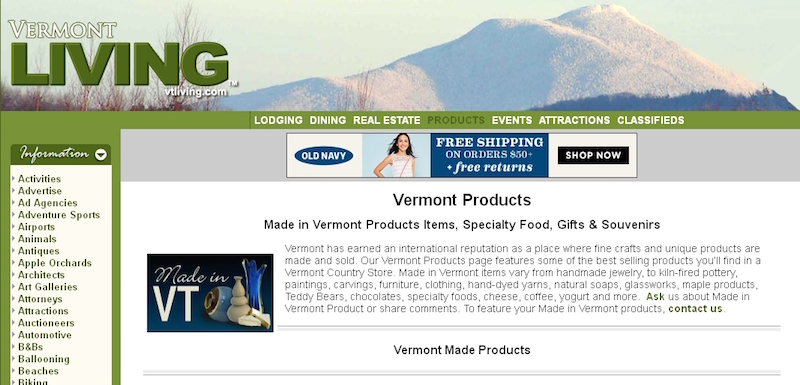
The online store for Vermont Living magazine opens with a sentence stating why made-in-Vermont items are worth it. It reads, “Vermont has earned an international reputation as a place where fine crafts and unique products are made and sold.”
—
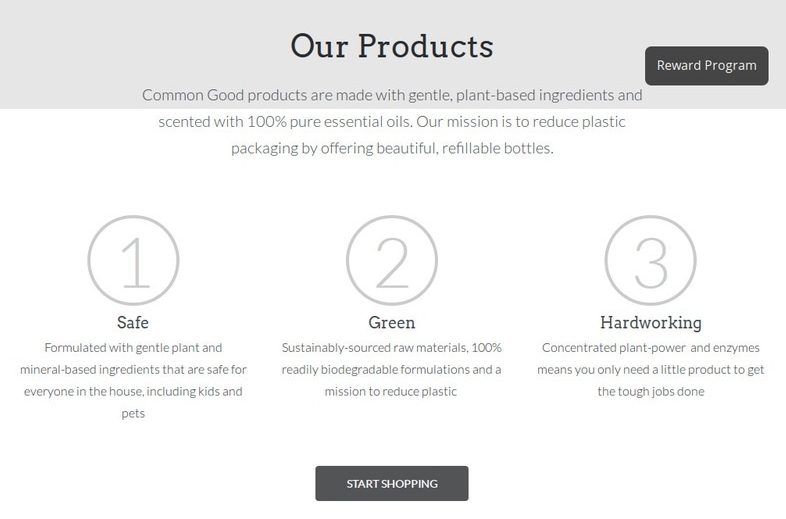
On its home page, Common Good, a maker of environmentally-friendly cleaning supplies, details three major reasons why consumers should buy its products: “Safe,” “Green,” and “Hardworking.” The products are safe for kids and pets, reduce plastic consumption, and are concentrated for long use.
Separate page describing your value. Don’t assume shoppers understand the type of benefits you offer. After all, shoppers may have landed on your site having no knowledge of your company. Make your case.
For example, instead of simply citing the phrase “cruelty free” or displaying those words alongside an image of a cute little bunny, you could provide a page explaining the measures you take to ensure that no animals are used to test your products. You could also provide statistics on the number of animals killed or maimed elsewhere from cosmetics testing and links to disturbing investigations of animal testing labs. Or your page could celebrate the positive side of respecting animals and elaborate on the depth and details of your mission.
Product descriptions that highlight value. When the justification for a higher price applies to a specific product and not the entire shop, explain the value in the product description. Do that by telling a story, describing a scenario in which the buyer is enjoying the item’s advantages, or identifying the higher quality via language like “limited-edition,” “pet-safe,” “hand-stitched,” “eco-friendly,” “hospital-grade,” and so on.
Notice the value signals in this sentence at Circuit Breaker Labs, which sells jewelry fashioned from circuit boards:
This elegant circuit board necklace is a classy way to show your love of technology!
A competitor, Tech Love Circuit Board Jewelry, used a poetic line to explain that value goes far beyond cost.
This heart-shaped jewelry is made from red circuit boards. It’s as if a computer somewhere discovered love and is just singing a binary song of love.
Insert your value reasons in paragraph form, as part of bulleted points, or as a graphical callout, such as a word or phrase in a starburst or bubble. Use your imagination. Even fanciful observations can convey your value message.
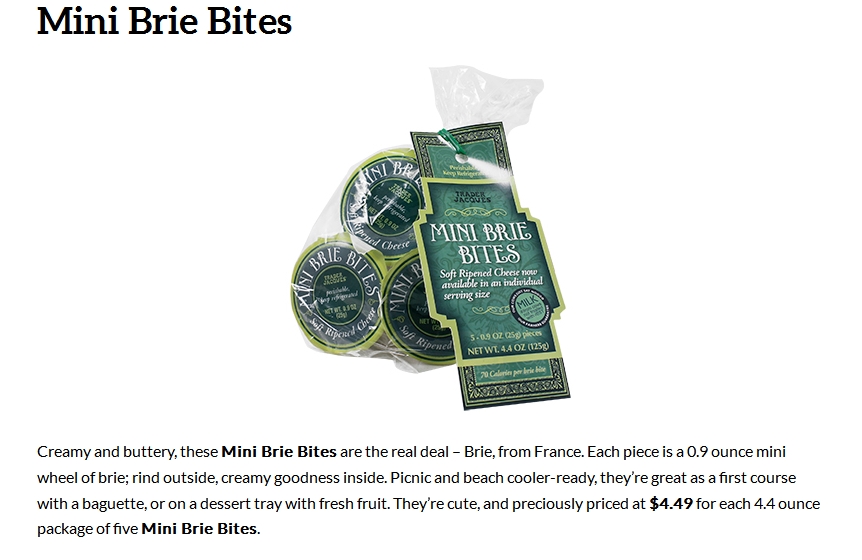
At $16 a pound, this cheese from Trader Joe’s nevertheless appeals because it’s described as “cute,” as well as handy for upscale outings.
—
Within product descriptions, go deeper than merely a list of features.
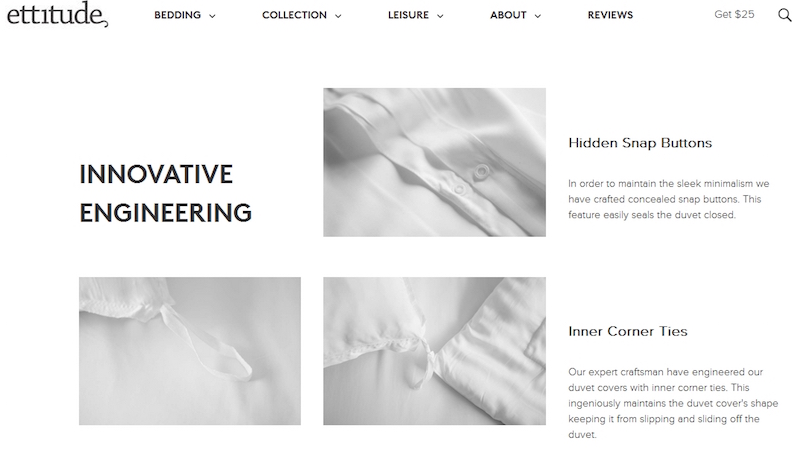
In the details for a bedding set from Ettitude, a retailer of luxury bedding products, the text — “Hidden Snap Buttons,” “Inner Corner Ties” — not only cites its unusual features but also explains why they make the product more valuable.
Remember, the more shoppers focus on what’s special and desirable about your offering, the better your chances to get the sale.
You don’t have to holler, “Hey, this is totally worth it!” — although you can if that fits your company’s personality. But by describing what makes your items worth their price, you encourage shoppers to squelch the urge to find a cheaper alternative.


